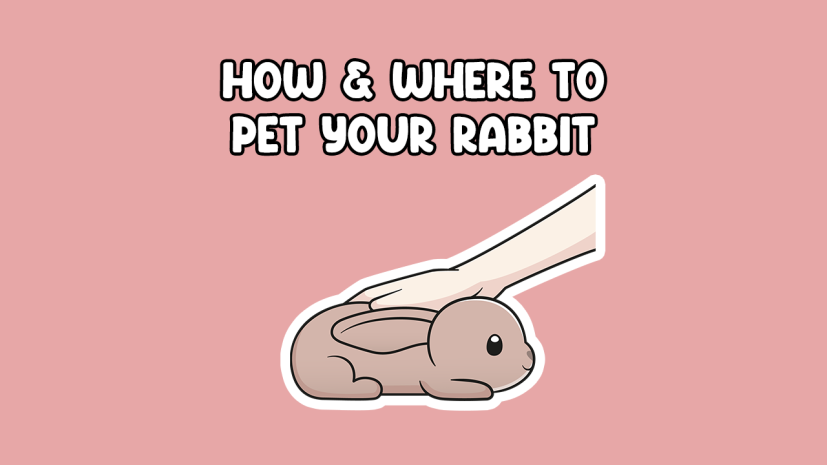
Rabbits can make excellent pets, but a common misconception is that they don’t like to be petted. However, rabbits can be incredibly affectionate, and many love to be stroked.
Of course, rabbits are all individuals and have different personalities. Some may enjoy being pets and interacting with their owner more than others.
Building a bond with your rabbit and getting them used to contact with you is pivotal in establishing a loving, affectionate relationship. Even if you rescued your rabbit and they’ve had bad experiences with humans, you can teach them you’re safe.
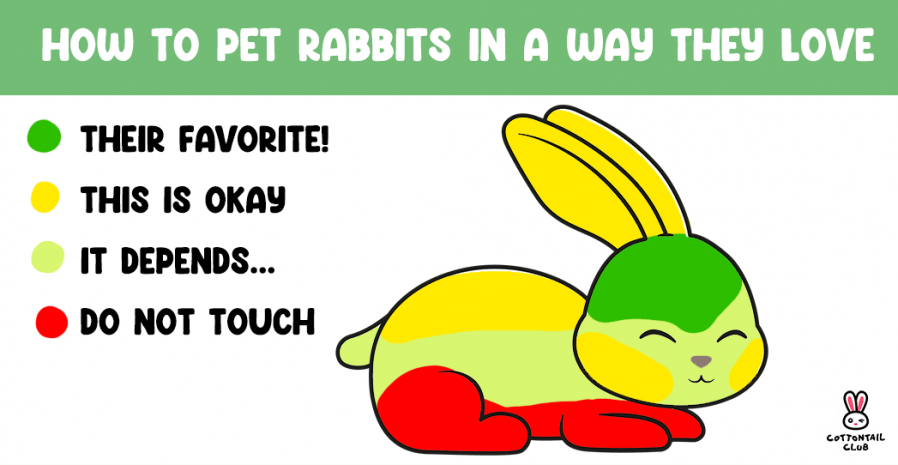
| Pet me here | I might like to be petted here | No, don’t pet me here |
| Forehead | On my ears | Bottom |
| Behind my ears | Sides | Belly/Chest |
| Cheeks | Rest of face | Under my chin |
| Down my back | Feet |
It’s important to remember that rabbits are prey animals, so they’re naturally nervous and have a deeply ingrained instinct to be on alert. Using the right approach can help your rabbit feel safe and relaxed with you.
You should be slow, gentle, and, perhaps most importantly, patient when petting your rabbit. If you are getting to know one another, learning that they can trust you might take time.
So, where do bunnies like to be petted? There’s some guidance below to get you started.
As we mentioned, rabbits are prey animals, so their vision is designed to allow them to see predators so they can run and hide. Dana M. Krempels, Ph.D.explains that a rabbit’s eyes:
“eyes are placed high and to the sides of the skull, allowing the rabbit to see nearly 360 degrees, as well as far above her head.”
This can make them skittish when they see something coming toward them. The way their field of vision works also means they have a blind spot in front of their nose.
If you approach your rabbit from the front, it won’t be able to see your hand coming and will get startled. Instead, keep your hand to one side of their head so they can see your hand and won’t be surprised.
You should move your hand in slightly higher than your rabbit’s head rather than in front of their face. This shows you aren’t trying to be dominant and aren’t a threat.
The best place to pet your rabbit is the top of their head at the front (think of it like their forehead).
Some people think that rabbits don’t like their ears being touched. While this might be true for some rabbits, many don’t mind!
If your rabbit is happy with you petting its head, you can try moving your hand back and gently scratching or stroking behind its ears. Many rabbits will enjoy a gentle massage behind the ears. You can even pet their head and behind their ears at the same time if you like.
You can gently try stroking their ears if they seem to enjoy this. Most rabbits will quickly let you know whether or not they like it (we’ll cover how to tell if they’re enjoying it later in this article).
Many rabbits enjoy being given a gentle massage from their nose right down their back. This can initially feel strange to your rabbit, so take it slowly. You can begin by stroking from their nose to the middle of the back, and then once they’re comfortable with that, stroke the whole length of their body.
Many rabbits like being stroked on their cute little cheeks. Gently introduce petting them on the cheek while you’re stroking their head. See how they react; you can massage their cheeks if they like it. My rabbit used to love getting his cheeks rubbed. He would lean his head into my hand: so cute!
Although most rabbits enjoy the attention of their owners, there are some places rabbits dislike being touched. They may freeze in fear, run away, or become aggressive. This can ruin the bond between you and make your rabbit distressed.
It’s best to avoid trying to pet your rabbit in the following areas unless it’s for medical reasons or for grooming:
Keep in mind that all rabbits are different, just like humans. This is just general guidance to help you bond with your bunny.
It’s important to note that most rabbits dislike being picked up and held. It can make them feel trapped and frightened, so it’s best to avoid this aside from grooming or medical purposes. Mary Cotter, vice president of the House Rabbit Society, states that if you do need to pick your rabbit up, you should: “support their front half, under their rib cage, with one hand and their rear end with the other, holding them close to your body like a football.”
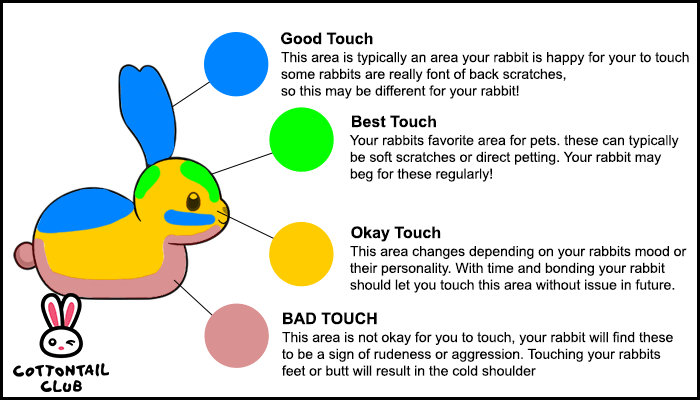
So, how do you tell if your rabbit is enjoying being stroked? Well, there are plenty of signs you can look for, including:
Being picked up and held can trigger their fear response because it deprives them of their ability to escape or defend themselves. In the wild, rabbits rely on their strong hind legs to flee from danger, and being restrained can make them feel vulnerable and anxious.
One common observation about bunnies is that they generally don’t like to be held. While it’s not true for all bunnies, many exhibit resistance or discomfort when lifted off the ground. Several reasons contribute to their aversion to being held, which can be attributed to their instincts, physical vulnerabilities, and individual personalities.
It’s essential to understand that rabbits are prey animals in the wild. Throughout their evolutionary history, they have developed a strong survival instinct, which includes being cautious of potential threats.
Another factor influencing a bunny’s reluctance to be held is its personality. Just like humans, rabbits have different temperaments and preferences. Some bunnies may be more inclined to enjoy physical contact and being held, while others may be more independent and prefer personal space.
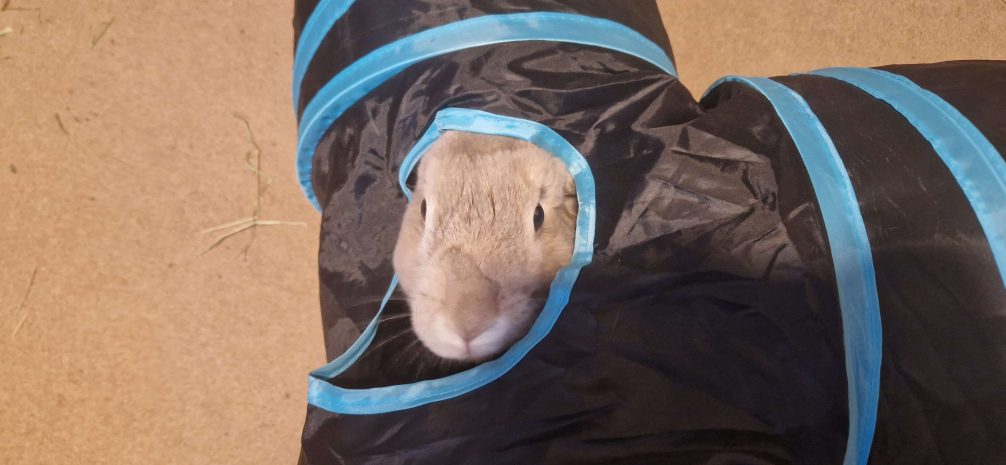
Stroking your rabbit isn’t just fun for you and them. It’s also a great way to get your rabbit comfortable with being touched so you can keep an eye on their health. Stroking your bunny allows you to spot any lumps, bumps, and skin irritations. It also makes grooming your rabbit much less stressful for you both!
If your rabbit doesn’t like being pet, there are things you can do to build a bond between you and get your rabbit used to contact. It’s best to start this process as early on as possible.
There are areas that most rabbits won’t like being touched, which we discussed earlier. Although you shouldn’t pet your rabbit in these areas, getting your rabbit used to brief touches in these areas for grooming and health purposes is worthwhile.
You can get your rabbit used to contact by using the tips below. If you need extra help, chat to your vet for advice.
| Do ✔ | Don’t X |
|---|---|
| Spend time with your rabbit | Pick your rabbit up (unless necessary) |
| Talk to your rabbit | Speak loudly or move suddenly |
| Be patient and consistent | Touch areas they don’t like more than needed |
| Offer plenty of treats | Try to rush things |
| Take your time | Ignore signs that they’re distressed |
| Watch their body language |
The first step is spending time with your rabbit. Sit quietly by their enclosure or on the floor when they roam free. You can talk quietly to them to get them used to your voice. If they come up to you or show interest, toss a treat onto the floor to teach them that interacting with you is positive.
A great way to build trust is by holding out treats and waiting until your rabbit takes them from your hand. Don’t touch them until they’re comfortable taking treats from you. Once they are, you can move on to the next step.
If you’re starting with a rabbit, you aren’t bonded to it. You can touch their forehead, as described earlier while offering them a tasty treat.
At first, they may move away or appear startled, but they will likely return to take the treat. When they do, you can briefly pet them again on the top of the head. Continue this process for a few minutes daily until they get the hang of it.
If you’re trying to get your rabbit used to touching those sensitive areas we mentioned, you can use the same technique but only briefly touch the area. Remember you’re not trying to encourage petting in this area, but rather to desensitize them to touch in that area.
You can help your rabbit get used to you and feel more relaxed by talking to them in a gentle, calm voice while you’re working on petting them. This reassures them and reinforces that you are not a threat.
It can take weeks or even months to build up trust, especially if your rabbit has previously had bad experiences with humans. The best thing you can do is be as patient as possible. Be consistent, doing short sessions to practice these skills each day.
Once your rabbit is used to being petted or touched in one area, you can move on to the other areas we mentioned earlier. You can alternate between petting them in the area they’re used to and the new area you’re working on. Take it slow and continue offering treats.
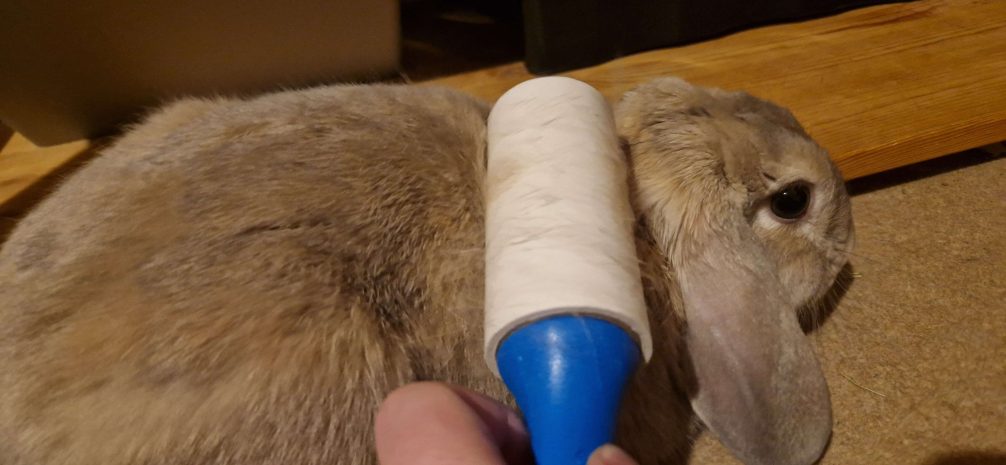
If your rabbit bows his head when you stroke him, it is likely a sign of submission or relaxation. Rabbits are social animals and have a hierarchical structure within their social groups.
By bowing their head, they are showing that they recognize you as the dominant member of their group and are comfortable with you petting them.
It can also indicate that they are enjoying physical contact and feel safe in your presence. Overall, bowing the head is a positive behavior and a sign that your rabbit is content and happy.
In general, rabbits do not like being pet while eating. Rabbits are prey animals and are naturally cautious about their surroundings while eating. They are also easily distracted and can become agitated if they feel threatened or focus is shifted away from their food.
Petting your rabbit while they eat can cause them to feel uneasy and anxious, leading to digestive problems or other health issues.
It’s essential to give your rabbit space while they eat and let them focus on their meal. If you want to bond with your rabbit, spending time with them outside of meal times and in a calm and relaxed environment is best.
You can also offer your rabbit treats or toys to play with to establish trust and build a positive relationship with them.
Rabbits show affection to humans in a variety of ways. One of the most common ways is through nose-to-nose interaction. This is when your rabbit comes up to you and touches their nose to yours. This is a sign of trust and affection and shows that your rabbit feels comfortable with you.
Another way that rabbits show affection is through grooming. Rabbits are naturally clean animals and will groom themselves and other rabbits as a way of bonding. If your rabbit licks or nibbles on you, this is a sign of affection and trust.
Rabbits also enjoy spending time with their owners and often follow them around the house or sit close to them. They may also jump on their owners or nudge them with their heads to seek attention or affection.
References
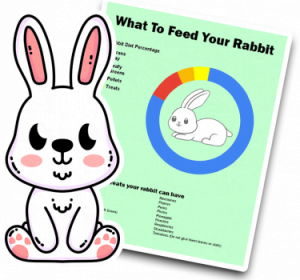
By entering your email address you agree to receive emails from Cottontailclub. We'll respect your privacy and you can unsubscribe at any time.